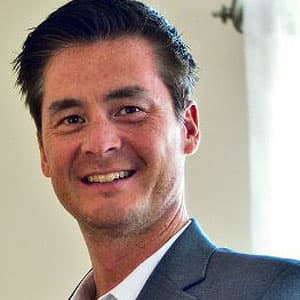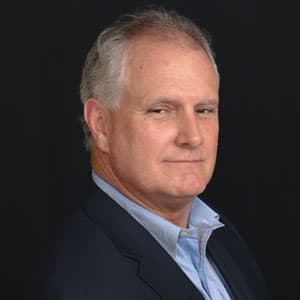The Blog
BBC Interview Series: Tim Kramer at TE Connectivity
BBC 2017 Speaker Series – Practitioner: Tim Kramer, IT Project Manager at TE Connectivity
In anticipation of his presentation at Building Business Capability in Orlando, Nov. 6-10, 2017, we asked Tim Kramer, IT Project Manager at TE Connectivity, a few questions about transforming the business. Check out this interview in relation to his BBC presentation entitled, Using Design Thinking to Transform Perception.
Q: In what ways do you see your group helping your organization handle business transformation?
A: Our group is integrated into the business where we are seen as a partner and trusted advisor when it comes to IT solutions so it’s a very symbiotic relationship with our business constituents that puts us into a leadership position to drive business transformation. Because we have a positive relationship with our business partners, they are more inclined to own the solutions that bring transformation to both the process and technology.
Q: Can you describe the challenges you face or have already overcome in establishing more robust business transformation capabilities for your organization?
A: My organization is heavily weighted in the Engineering and Manufacturing space so in the past IT has always been perceived as a “corporate” entity that pushes systems to the users with no regards to true business needs. By developing a tighter integration with the business and using a disciplined approach to business analysis to manage the requirements process better, we can work closely with the business in order to gain trust with them in order to align their strategy with our recommended solutions. By adopting design thinking techniques and truly employing empathy with the business, we can work with them to develop holistic solutions that meet their needs and provide organizational benefit.
Q: What are your short-term goals for becoming more agile?
A: Our short-term goals for becoming more agile are to provide benefits to the business faster where they can gain efficiency quickly.
Q: What’s the most valuable thing you’ve learned in the past year?
A: I’ve learned that no everyone shares my opinions or beliefs and that working with our business partners takes time. Managing executive expectations of solutions and benefits is difficult but not impossible. If we can show that our business partners are willing to pay for solution improvements and that it brings positive transformation to the business, then we have provided a real benefit. The customer may not always be right, but it is our job to understand their needs and guide them in the right direction.
Q: What do you see as the most important goal or trend for business analysts and other professionals to keep in mind?
A: Because we live in a fast-changing world, a business analyst needs to adapt to the environment and understand the process and technology of the people that they are working with. It’s not only important to have a depth of knowledge in a few areas, but to also expand and have more breadth to understand end to end solutions and not just an application. We need to look at the larger picture and embrace that disruption within the business is a good thing. Change in the right direction is change well needed. We have to drive forward and not be afraid to fail because those moments are the times in which we will learn how to be more successful.
Q: What’s the latest method/process/tool you’ve implemented to help your business operate more effectively? Have you seen any results yet?
A: We recently started using JIRA as a tool to manage requirements, track issues, and track questions. We have always used JIRA to track technical issues and bugs, but this approach is more collaborative with the business. It is especially helpful in the requirements review phase because it can be changed during meetings with the stakeholders and can be linked to other issues and objects in JIRA so there is more traceability. This provides a more fluid environment and because everything is digitally stored, it is easy to run reports and track metrics throughout the lifecycle of a project. I managed a project using JIRA and our stakeholders mentioned that this was a much better process than reading through a BRD and providing feedback. The benefit for them was that the voice of the customer was documented “real time” and they could spend less time on reviews and meetings and more time in their job.
Q: If you could go back 5 years in time and give some professional insight or advice to yourself, what would it be?
A: I would love to be able to do that! Besides telling myself that I need to stick with cycling more, I would tell myself to continue pursuing your education in business analysis and earn your CBAP or a form of business analysis professional accreditation. Business Analysis is something that you do every day and not just on a project. Often times we get caught up in “doing our job” that we often lose sight in doing our jobs with purpose. I don’t think we need to follow a prescribed method but we should carve out the necessary time to devote to educating ourselves and becoming a better processional in order to provide the best benefit to our customers.
Q: What’s one question you wished you were asked in this interview but were not? And how would you answer?
A: I think an important question to ask is how did you start your career in business analysis and what brought you to the point in your career that you are in now.
My answer to that would be that first and foremost, business analysis is understanding human needs and solving human problems. Even before someone decides to be a good business analyst, they have to commit to just being a good person. I worked in the service industry growing up and have always felt that I am a customer-centric individual. Empathy is the basis of design thinking and I think if you are intrinsically motivated to make this world a better place to understanding others, then you have a great start to be an incredible Business Analyst. Secondly, I would say that education is a gift and the fact that we have free education at our fingertips is an even greater gift. I’m not necessarily talking about getting a free MBA from Harvard, but there are webinars, online learning, local IIBA Chapter meetings, and even lunch and learn sessions within a lot of organizations. If we aren’t taking advantage of these opportunities, then we aren’t investing in ourselves and our futures. Embrace all of the educational opportunities that you can, even if it is not specific to the practice of business analysis. Finally, I am seen as a leader within my organization because I take the opportunity to grow, to mentor, and to work collaboratively with others. My way isn’t always the best way and my methods don’t always work. The key to my success in where I am now is that I use each successful implementation AND a failed task as a learning experience to get better in the future. Listening is key, especially when things get loud. If you take a moment to truly listen to people around you, it will surprise you to find out what you learn.
Q: Sneak preview: Please tell us a take-away that you will provide during your talk at the Building Business Capability (BBC) conference this year?
A: One of the main take-aways that I have for my presentation is that design thinking should be seen as just good practice as a Business Analyst and not a “tool” or “prescriptive method.” Too often we introduce something new within an organization and people are put off by the idea that it’s another program that they have to learn. It’s really not. It’s about employing empathy and gaining an understanding of what our customer needs. Using this is the foundation, it is then much easier to understand how we use the other tenants of design thinking when working with our business partners.
Another main take-away from my presentation is that developing and starting a design thinking program within your organization is more than likely going to be a slow journey. Think of this as an evolution, and not a revolution. It takes time to help people understand how using design thinking will bring benefit to the customer and to the organization. Some of this will not be quantifiable but if you stick with the basic idea that it’s good business analysis, then you will find that people will look back and wonder why it has taken so long for the company to adopt design thinking as the normal way of doing business.
—————————–
Don’t miss Tim’s presentation, Using Design Thinking to Transform Perception, at Building Business Capability on Friday, November 10, 2017 from 10:20 to 11:20 am. Click here to register for attendance.
2018 Program
Connect
Building Business Capability is the only conference that provides insight into Business Analysis, Business Architecture, Business Process, Business Rules, Business Decisions, and Business Strategy & Transformation toward the pursuit of business excellence.
STAY CONNECTED
Event Produced and Organized by Rising Media in association with Business Rule Solutions Copyright © 2010-2018, Rising Media, Inc. All Rights Reserved.











